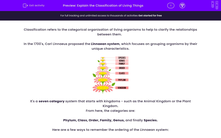Classification refers to the categorical organisation of living organisms to help to clarify the relationships between them.
In the 1700's, Carl Linnaeus proposed the Linnaean system, which focuses on grouping organisms by their unique characteristics.
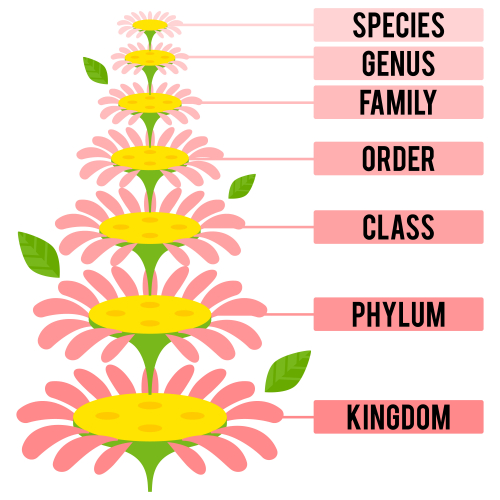
It's a seven category system that starts with kingdoms - such as the Animal Kingdom or the Plant Kingdom.
From here, the categories are:
Phylum, Class, Order, Family, Genus, and finally Species.
Here are a few ways to remember the ordering of the Linnaean system:
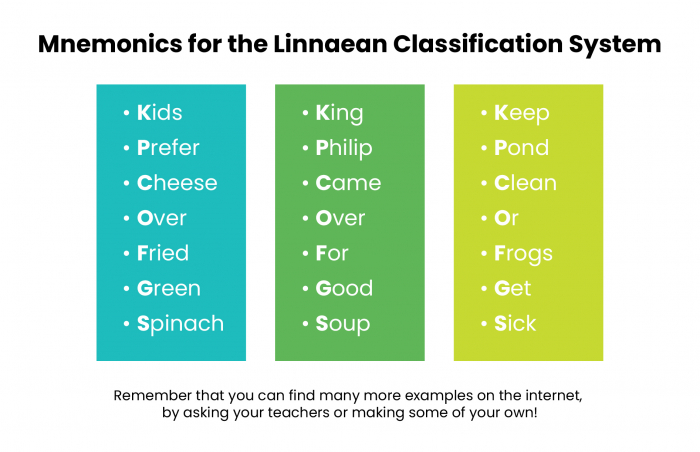
But for naming organisms, biologists use the binomial system, meaning that each living thing gets two Latin names, starting with the organism’s genus (to tell us its heritage) and ending with the species.
Let’s take an example: have you heard of Homo sapiens? Well, that’s actually us - we're in the 'Homo' genus and part of the 'sapiens' species!
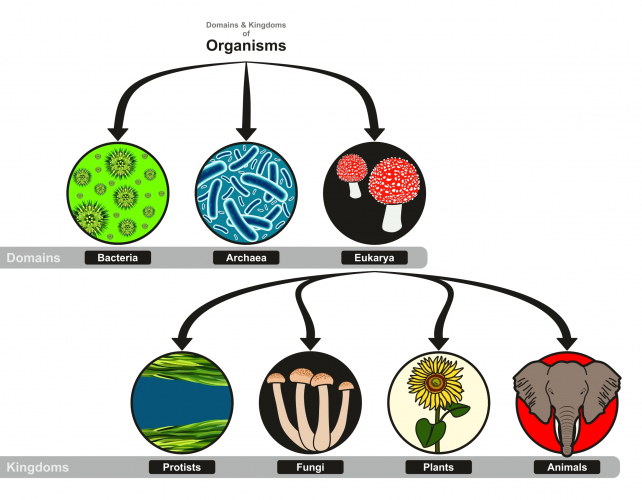
However, as time has passed, new biological theories and technological advancements such as the microscope have furthered classification greatly.
This invention especially highlighted the internal biological processes within living things, which scientists have used to improve their classification models.
In the 1990's, Carl Woese used data from chemical analysis to make the ‘three-domain system’ of classification. He separated living things into three domains:
Archaea:
Thought to be primitive bacteria, we now know that these are a type of prokaryotic cell like bacteria, and are believed to live in extreme areas like hot springs.
Bacteria
These are true bacteria, but have key characteristics different from Archaea.
Eukaryotes
Protists, Fungi, Plants and Animals.
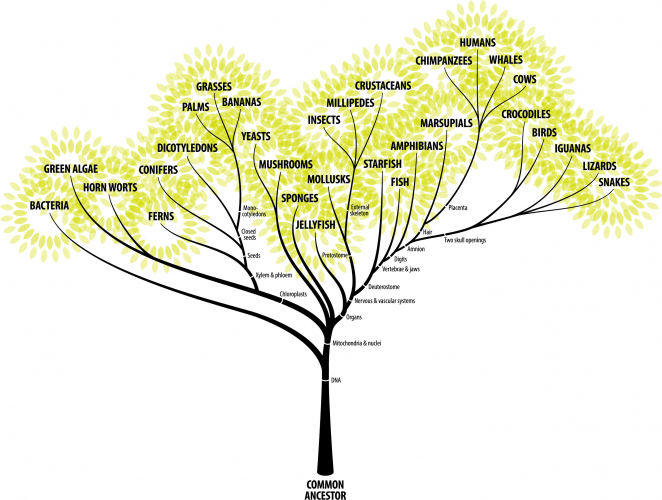
Finally, sorting organisms based on characteristics helps us to understand their similarities and differences.
Evolutionary trees are diagrams that visually display how closely related different beings are to each other.
This can be done for living life forms using up-to-date classification data, but we can also look back and organise extinct beings through what we know from their fossil remains.
Now it's time for some questions to see how much you can remember!

